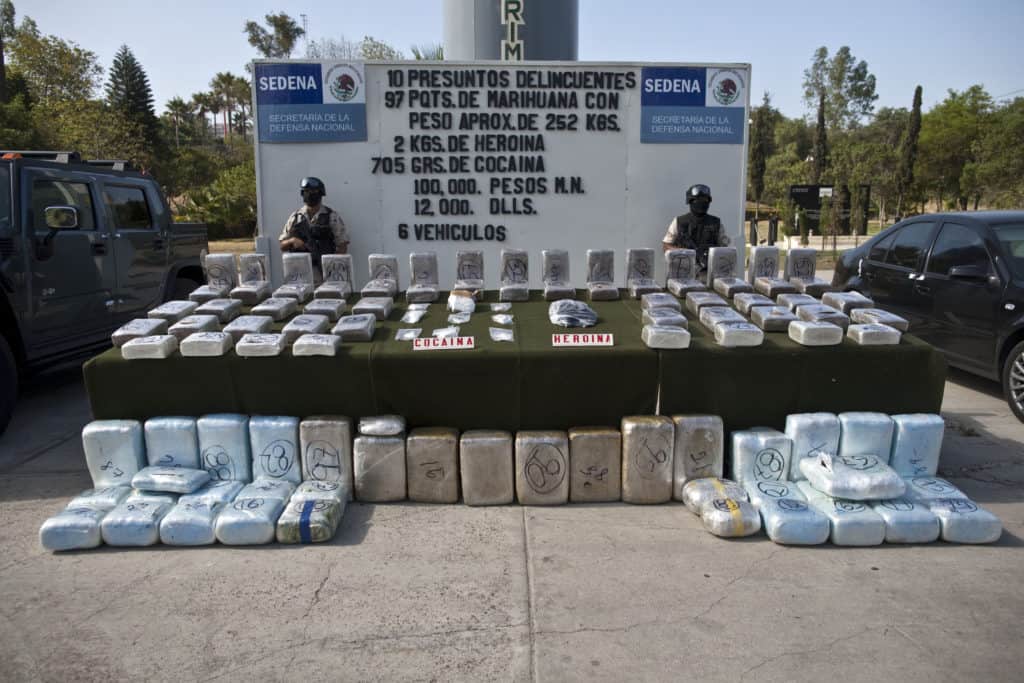Mexico Remains Number 3 Opium Poppy Producer
Mexico News Daily, June 23, 2017

Soldiers guard packages of drugs and vehicles seized in several operations during a presentation to the media in Tijuana, northwest Mexico. The army presented the seizures, including the seizure of six vehicles, two kilos of heroin, 252 kg of marijuana, one hundred thousand pesos and 12000 U.S. dollars, also reported the arrest of ten suspects. (Credit Image: © [E]Guillermo Arias/Xinhua/ZUMAPRESS.com)
The world’s top producer country is Afghanistan with 183,000 hectares followed by Myanmar with 55,500 hectares.
The estimated area of poppy plantations in Mexico was based on data from 2014 and 2015 and while relatively small there has been a marked upward trend.
In 2005, just 3,300 hectares of land were used to grow opium poppies in Mexico, but four years later the figure was up to 19,500 hectares.
By 2012, a thousand hectares were added to the cultivation of opium poppy, source of heroin and morphine.
The amount of heroin confiscated has increased over the years as well, from 362 kilograms in 2011 to 546 in 2015.
Without giving quantities, the UNODC report indicated that in 2015 Mexico reported the largest amount of confiscated cannabis in the world. Likewise, the largest number of marijuana plantations were destroyed here between 2010 and 2015.
The report described the structure of Mexican drug cartels as similar to drug trafficking gangs in Japan and Russia.
It also stated that “some Mexican drug cartels have presumably benefited from the protection of police and politicians.”
The report estimated that drug trafficking represents between one-third and one-fifth of the revenues earned by international organized crime groups, its relevance is declining.
“Organized criminal groups have become more agile in their structures, going from one market to the other opportunistically.”
The UN advises that regions affected by organized crime should find other socioeconomic options bolstered by legitimate and transparent institutions, as well as the firm rule of law.















